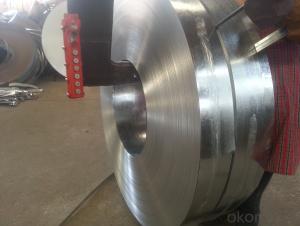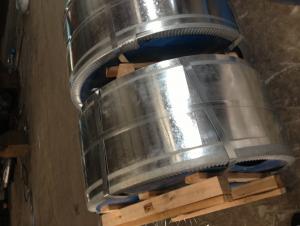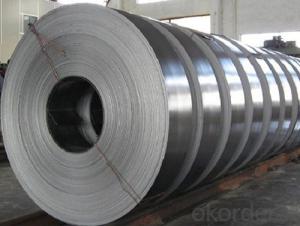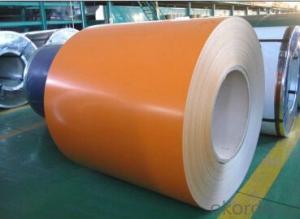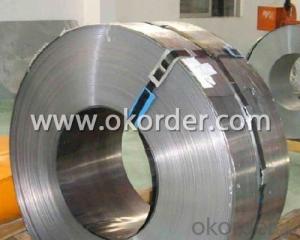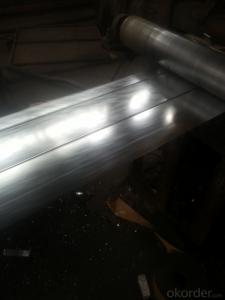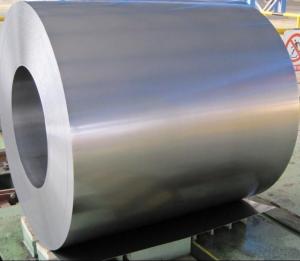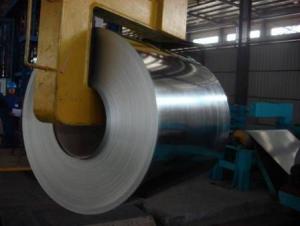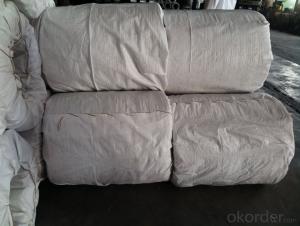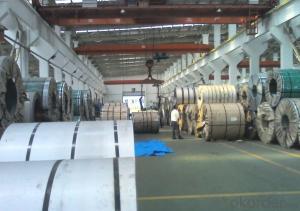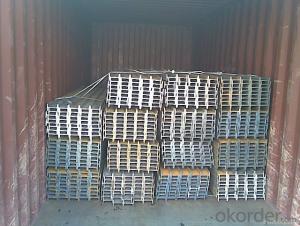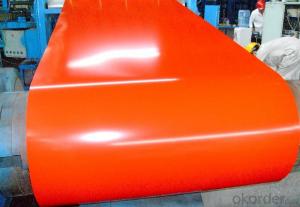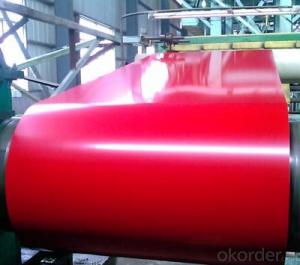Hot Dip Galvanized Slitted Steel Coils Hot sale
- Loading Port:
- Shanghai
- Payment Terms:
- TT OR LC
- Min Order Qty:
- 25 m.t.
- Supply Capability:
- 50000 m.t./month
OKorder Service Pledge
OKorder Financial Service
You Might Also Like
Product Description:
Hot Dipped Galvanized Steel Strips
Hot-dip galvanized steel strips are available with a pure zinc coating through the hot-dip galvanizing process. It offers the economy, strength and formability of steel combined with the corrosion resistance of zinc. The hot-dip process is the process by which steel gets coated in layers of zinc to protect against rust. It is especially useful for countless outdoor and industrial applications.
Product Description Of Hot Dipped Galvanized Steel Strips
Thickness | 0.18mm-3mm |
Width | less than 600mm |
Zinc Coating | 30-200g/m2 |
Internal Diameter | 508mm/610mm |
Coil Weight | less than 3MT |
Quality | commercial and structural quality |
Surface Treatment | regular & minimum spangle, zero spangle, oiled & dry, chromated , non-skin pass , skin pass |
Standard | JIS G 3302, ASTM A 653M, EN 10327 |
Steel Grade | SGCC, CS, FS, SS, LFQ, DX51D+Z , S280GD |
Technical Data Of Hot Dipped Galvanized Steel Strips
Chemical Composition | C | Si | Mn | P | S |
0.04-0.06% | 0.01-0.03% | 0.18-0.22% | 0.014-0.016% | 0.006%-0.009% |
Yield Strength | (Mpa) 280-320 |
Tensile Strength | (Mpa) 340-390 |
Elongation | 20%-30% |
Out-of-square | not exceed 1% Flatness |
Bow | 15mmmax |
Edge Wave | 9mmmax |
Centre Buckle | 8mmmax |
Bending At 180 Degree | No crack, purling and fraction |
Application Of Hot Dipped Galvanized Steel Strips
It can be widely used in transportation, light industry, civil usage and farming. It is also the perfect building material in construction for making roofing tile, steel profiles for wall partition, T-bar, studs, fireproof door, air conditioning duct and home appliance.
- Q: Can steel strips be galvanized?
- Yes, steel strips can be galvanized. Galvanization is a process in which a protective zinc coating is applied to steel to prevent corrosion. This process can be applied to various forms of steel, including steel strips. Galvanizing steel strips provides them with enhanced durability and resistance to rust and corrosion, making them suitable for a wide range of applications in industries such as construction, automotive, and manufacturing.
- Q: How do steel strips perform in terms of chemical resistance?
- Steel strips generally have good chemical resistance due to the protective layer of oxide that forms on their surface. However, their resistance can vary depending on the specific type of steel and the chemicals involved.
- Q: How are steel strips used in the production of electrical components?
- Steel strips are commonly used in the production of electrical components as a base material for various applications. They provide structural support, grounding, and protection to the components, while also facilitating efficient heat dissipation. Additionally, steel strips can be used to form magnetic cores in transformers and inductors, allowing for effective power transmission and regulation.
- Q: Can steel strips be used in the manufacturing of machinery?
- Yes, steel strips can be used in the manufacturing of machinery. Steel strips are often used to make parts and components for machinery due to their strength, durability, and versatility. They can be easily formed, shaped, and cut to meet specific manufacturing requirements, making them suitable for various applications in machinery production.
- Q: How do steel strips compare to other materials in terms of cost?
- Steel strips are typically more cost-effective compared to other materials due to their durability, versatility, and abundance.
- Q: Can steel strips be used in the manufacturing of boat hulls?
- Yes, steel strips can be used in the manufacturing of boat hulls. They are commonly used in larger vessels due to their strength, durability, and ability to withstand harsh marine environments.
- Q: What are the common grades of steel used for making strips?
- The grades of steel commonly employed for strip production vary depending on the specific purpose and desired characteristics. However, several frequently utilized grades encompass: 1. Low carbon steel (C1008/C1010): This steel grade is favored for strip production due to its exceptional formability and weldability. It finds widespread use in industries including automotive, construction, and appliances. 2. Medium carbon steel (C1045/C1050): Offering superior strength and hardness compared to low carbon steel, this grade finds application where heightened strength and wear resistance are required, such as in the manufacture of cutting tools or machine components. 3. High carbon steel (C1095): Among the common grades, high carbon steel strips exhibit the highest strength and hardness. They are commonly employed for manufacturing springs, saw blades, and other high-stress applications that demand durability and resilience. 4. Stainless steel (e.g., 304/316): Stainless steel strips are extensively utilized owing to their exceptional resistance to corrosion and appealing aesthetic qualities. They find common use in applications like kitchenware, automotive trims, and architectural components. 5. Alloy steel (e.g., 4140/4340): Alloy steel strips are formed by incorporating diverse alloying elements to enhance specific properties such as strength, toughness, or heat resistance. They are commonly employed in applications requiring high strength and durability, such as the production of gears, shafts, or aerospace components. It is essential to note that these represent just a few instances of the grades of steel commonly employed for strip production, with numerous other grades available, each with its distinct properties and applications. The selection of the appropriate grade relies on factors such as the intended use, required mechanical properties, and the environmental conditions to which the strips will be exposed.
- Q: How do steel strips contribute to reducing greenhouse gas emissions in various applications?
- The energy efficiency, recyclability, and durability of steel strips play a crucial role in reducing greenhouse gas emissions in various applications. Firstly, the production process of steel strips is highly energy-efficient. Abundant iron ore is used to make steel, and advancements in technology, such as electric arc furnaces, have significantly reduced energy consumption compared to traditional blast furnaces. Additionally, measures like waste energy recovery systems have been implemented by steel manufacturers to further improve energy efficiency, resulting in lower emissions during production. Furthermore, steel strips are highly recyclable, maintaining their properties even after multiple recycling cycles. This not only reduces the need for new steel production but also requires less energy and resources compared to manufacturing virgin steel. By utilizing recycled steel strips, the demand for raw material extraction and processing is significantly reduced, leading to a substantial decrease in greenhouse gas emissions. Moreover, steel strips are known for their durability and longevity in various applications. Their strength and resistance to wear and tear make them a preferred choice in industries like construction, automotive, and infrastructure. By using steel strips with a longer lifespan, the need for frequent replacements and repairs is minimized, resulting in lower emissions throughout the product's lifecycle. In conclusion, the energy efficiency, recyclability, and durability of steel strips contribute significantly to the reduction of greenhouse gas emissions in various applications. By implementing energy-efficient production processes, promoting steel recycling, and leveraging the durability of steel strips, we can effectively mitigate the environmental impact and work towards a more sustainable future.
- Q: Can steel strips be coated or plated?
- Yes, steel strips can be coated or plated. Coating or plating steel strips is a common practice in various industries to enhance their performance and protect them from corrosion. There are several methods available for coating or plating steel strips, such as hot-dip galvanizing, electroplating, and powder coating. Each method offers different benefits and is chosen based on the specific requirements of the application. Coating or plating steel strips can improve their aesthetics, durability, and resistance to environmental factors, making them suitable for a wide range of applications in construction, automotive, electronics, and many other industries.
- Q: How do steel strips contribute to noise reduction in various applications?
- Steel strips are capable of absorbing and dampening sound waves, making them valuable in reducing noise in different situations. When employed as a soundproofing material, steel strips effectively decrease noise transmission by reducing vibrations and eliminating resonance. One method by which steel strips assist in noise reduction is by acting as a barrier. When properly installed, steel strips create a physical obstacle that prevents sound waves from passing through. This is especially beneficial in building construction, where steel strips can be used to line walls, floors, and ceilings, effectively blocking external noise sources. Moreover, steel strips have the ability to absorb sound energy. By incorporating materials with sound-absorbing properties, steel strips can successfully soak up and disperse sound waves. This is accomplished by converting sound energy into heat energy. The unique composition of steel strips enables them to convert sound waves into vibrations, which are then dissipated as heat energy, resulting in a decrease in overall noise levels. Additionally, steel strips contribute to noise reduction by dampening vibrations. Vibrations can generate significant noise in various applications, such as industrial machinery or vehicle engines. Steel strips have the capability to absorb and dampen these vibrations, preventing them from spreading and reducing the resulting noise. This is achieved due to the inherent stiffness and density of steel, which helps dissipate vibrations and minimize their impact on the surrounding environment. In conclusion, steel strips play a vital role in reducing noise across a range of applications. Whether used as a barrier, sound absorber, or vibration damper, steel strips effectively contribute to creating quieter and more comfortable environments by minimizing noise transmission and improving overall acoustic performance.
Send your message to us
Hot Dip Galvanized Slitted Steel Coils Hot sale
- Loading Port:
- Shanghai
- Payment Terms:
- TT OR LC
- Min Order Qty:
- 25 m.t.
- Supply Capability:
- 50000 m.t./month
OKorder Service Pledge
OKorder Financial Service
Similar products
Hot products
Hot Searches
Related keywords
